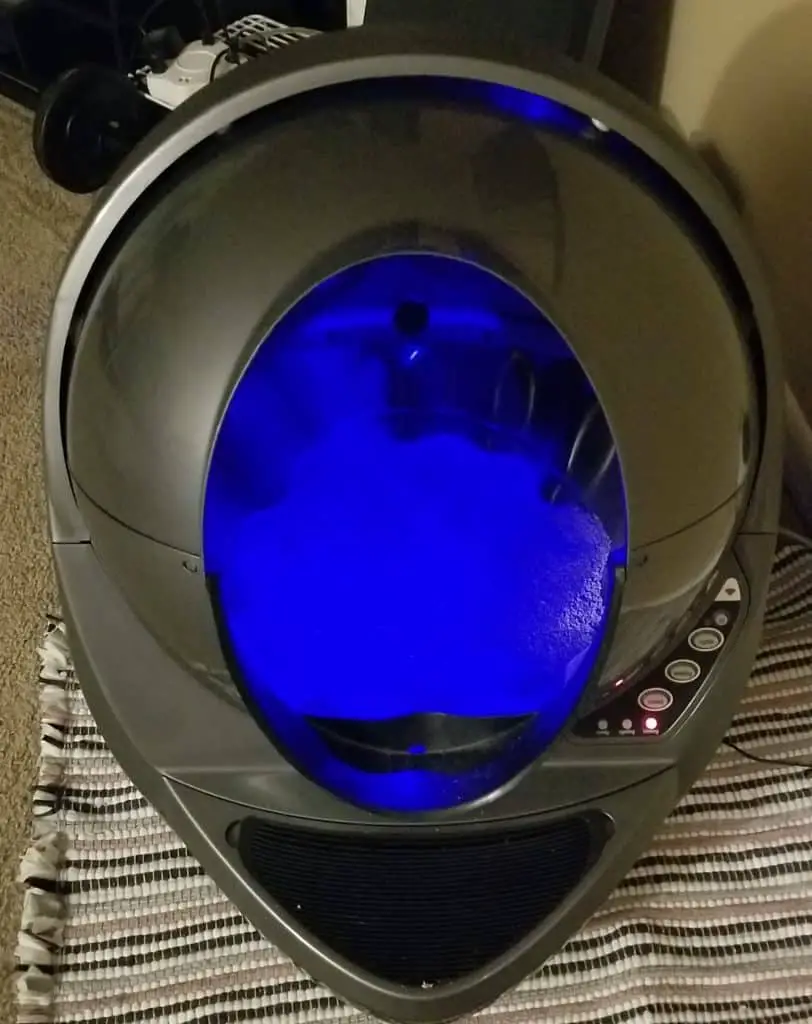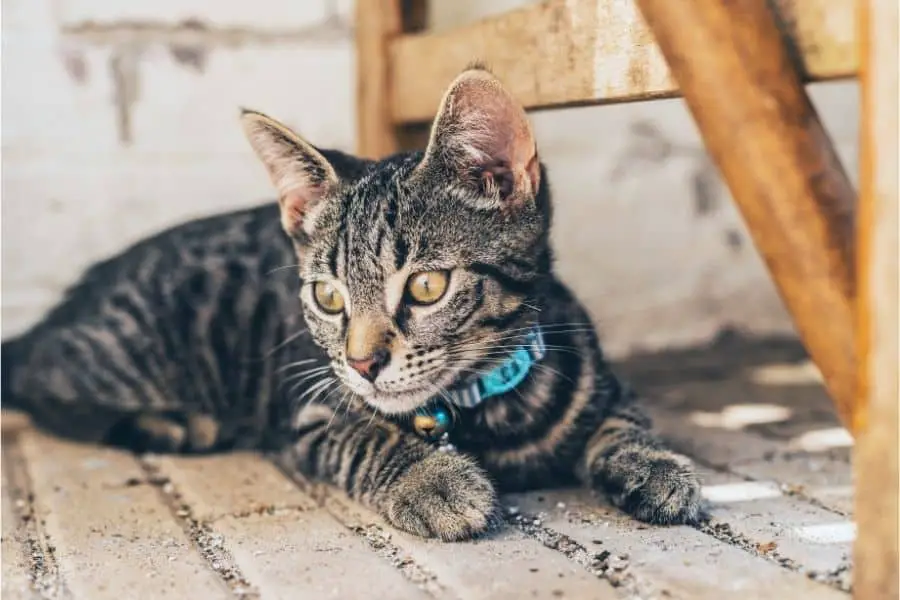More Meows is an Amazon Associate. As an Amazon Associate we earn from qualifying purchases. We may also earn commissions if you purchase products from other retailers after clicking on a link from our site.
There are a lot of different cat breeds out there. Most of us go through life without really thinking about what these differences mean or why they are present. But maybe you have noticed that of all the varieties of domesticated cats, tabbies are by far the most common. And perhaps you wonder what cats look like under their coats.
Tabby cats can have paws of many colors. Tabby cats have multicolored fur coats that determine the color of their paws and pads. It is not uncommon for a Tabby cat to have paws or pads of different colors, like black or pink.
If you have a tabby cat, you may have noticed that their paw pads can change color. These color changes occur for a variety of reasons. Sometimes it is simply a genetic change that occurs as the cat ages.
In other cases, it can indicate an underlying cause that you will want to have checked by your vet. Read on to learn more about tabby cats and their paw colors.
Pro-Tip: If you are thinking of buying a cat or are a cat owner already, then you should be aware that taking care of the litter box can be a real chore. In this age of smart products, an automatic litter box has been created that actually makes life easier with taking care of the litter box. If you want to make your life much easier with a litter box that means you’ll never have to scoop litter again, check out the best automatic litter box on the market (in my opinion) on Amazon.
Tabby Cat Coat Colors
Simply put, the color of any cat’s fur usually determines the color of the cat’s paw pads.
- A black cat will have black pads.
- White cats have pink pads.
- Orange cats have orange pads.
- Tabbies often have pink or black pads.
Furthermore, multicolored cats can have multicolored pads! For example, my Tabby cat, Charlotte, has many colors on her coat, and she has two gray paws and two brown paws. Surprisingly, one of her paws has only pink pads, one of her paws has only black pads, and two of her paws have pads with both pink and black.
The cells that give the fur pigment reside in the skin at the base of each hair follicle. This pigment colors the skin from which the hairs grow. If you shaved your cat, you would see the pattern on the fur on the skin as well! So if your tabby has many colors, its paws will probably be multicolored as well.
Tabby Cat Coat Patterns and Colors
To understand what determines the color of a tabby’s paw pads, first, you need to know about the different tabby coats.
Tabby cats have been around since cats and humans first started their partnership. They are by far the most numerous cat you will encounter in every cat population.
Tabbies, in many cases, closely resemble their wild ancestors. Their distinctive markings provide camouflage for wild cat species today and domesticated cats that help them evade predators and sneak up on prey.
Coat Color
The coloration of tabby coats varies widely among individual cats. These distinctive patterns emerge in gray, brown, black, and orange colors for the standard tabby coats, with further variations in these coats.
With the addition of the fifth tabby coat, the patched tabby, the coat variation becomes limitless. As part of the coat takes on other breeds’ appearance, these mixed tabbies vary as much as their parentage.
You can usually assume the color of a cat’s paws based on the color of his or her coat.
Tabby cats are broken up into four distinct groups based on the coloring and patterns of their coats. These groups are:
- Classic
- Mackerel
- Ticked
- Spotted
The markings on a tabby cat’s coat determine which category it will fall into. However, each of these four tabby cat varieties is linked by one common trait: All tabby cats have a distinct “M” marking in the fur between their eyes. Therefore, you can always tell when a cat is a tabby when you see that “M.”
Apart from these distinctive markings, a tabby’s coat color ranges through all the usual cat colors and usually has more than one color. In addition to these four groups, another emergent group occurs when one of the standard four groups co-occurs as a patched pattern.
Classical Tabby
Sometimes called a blotched or marbled tabby, the Classical tabby coat has thick swirling stripes all over the cat’s body. Often, a distinctive bullseye pattern emerges on a Classical tabby’s sides. These wide bands and lines contrast the colors of the coat much more than the mackerel tabby.
Mackerel Tabby
The Mackerel tabby coat (named after the mackerel fish’s markings) displays thin vertical stripes down the cat’s sides. These stripes are continuous but are sometimes “broken” into segments.
Ticked Tabby
Ticked tabbies get their name from their salt-and-pepper or sand-like coats. These coats have no pronounced striping or marks on the coat. Instead, this coloration (agouti) results from the pattern of individual hairs banded by different colors.
Spotted Tabby
The Spotted tabby’s coat is distinguished from the other coats by the distinct spots that are displayed. These spots derive from the striped pattern, but a gene variation causes them to appear circular. These spots are present as large and small, giving some of these kitties the appearance of little jungle cats.
Patched Tabby
The fifth tabby coat combines one of the four standard tabby coats with another coat type. This characteristic gives the tabby a patched appearance, hence the name. Patched tabbies often have prominent, solid coloration side-by-side with the classic tabby pattern, making for exciting and unique designs.
Patched tabbies almost always have black paws. Their coloring is usually made up of a mixed-and-match style, which lends itself to black paw pads.
Tabby Cat Paw Pads and Changing Color
If you notice your tabby cat’s paw pads changing color, do not panic. This can happen with tabby cats. There are typical reasons why this change can occur, and often there is no cause for concern.
However, sometimes your tabby cat’s paw pads changing color can indicate a health issue at work. It is never a bad idea to check with your vet, especially if you can rule out the natural reasons behind the change.
Aging
Coloration is complicated and based on numerous genes. Like humans (hair color changing from blond to brown), cat coats may undergo normal color changes. These changes reflect changes in skin pigment, including the paw pads. Your tabby’s pads may change as it ages and is not a cause for worry.
With certain cat breeds, pads becoming black is normal and expected. However, if your tabby is mixed with one of these breeds (patched tabby), these changes may also occur.
Injury
If you notice the pads are becoming black, check to see if the pads sustained injury. Injuries that become infected may cause the pads to become black. Also, if you see the cat walking with a limp or otherwise displaying signs of damage, take a close look. Cracked skin, redness, and swelling are apparent signs of injury.
Disease
Certain immune disorders lead to changes in the color of the pads. These changes often accompany puffy-pad disease and typically afflict older cats. If you notice these changes, take your kitty to the vet.
Conclusion
Your tabby cat’s coat and paws are as unique to it as your fingerprints are to you. The type of tabby you have and what coloring is present in the coat determines the color of the paws.
The most likely reason your tabby has or is expected to have black paw pads is that it is a patched tabby with black fur near the feet. Some people believe that black paw pads mean your cat has wild African cat ancestry.
However, the truth is that most cats have wild African cat ancestry. No matter what color your tabby’s paws are, they are perfect the way they are and are sure to make great companions.
If you enjoyed this article, please check out a few others:
- Do Cats Like Cat Strollers? (The Honest Truth): Click Here.
- Do Cats Like Cat Condos: Click Here.
- Are Female Cats Harder to Take Care Of? The Real Truth: Click Here.
Here are some of my favorite cat products
In addition to checking out some other More Meows articles, I hope you’ll check out some of my favorite cat products as well. These are affiliate links, so if you end up using them, I’ll get a commission at no extra cost to you. These are the products I really do find most helpful.
Litter Box: I started out with normal, traditional litter boxes for my cat. Then, I tried this automatic litter box on Amazon (affiliate link), which helped reduce the litter upkeep. Finally, I am now a believer in the Litter-Robot 3 Connect on Amazon (affiliate link). This robotic litter box is not for everyone based on the price tag, but for me the benefits (very little upkeep, works efficiently, clean, mobile app) far outweighed the cost.

Cat Tree: I have purchased a couple of this Amazon Basics Cat Tree on Amazon (affiliate link). My cat spends a lot of time on and around this cat tree, which I position near my sofa. She uses the scratching posts on this cat tree multiple times a day, which means she is not scratching the sofa instead.
Cat Water Fountain: I love this cat water fountain on Amazon (affiliate link). There are three main benefits to having a water fountain like this for your cat. The first benefit is that it keeps water running so that your cat doesn’t need to drink still water. The second benefit is that it filters the water. The third benefit is that it will keep your cat hydrated!

